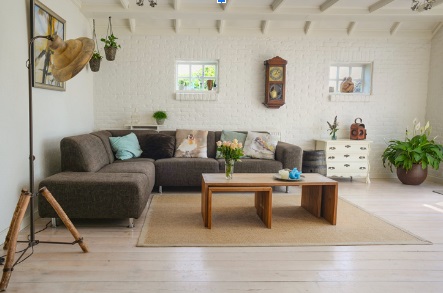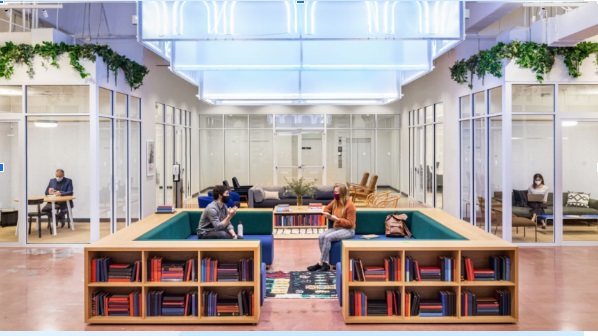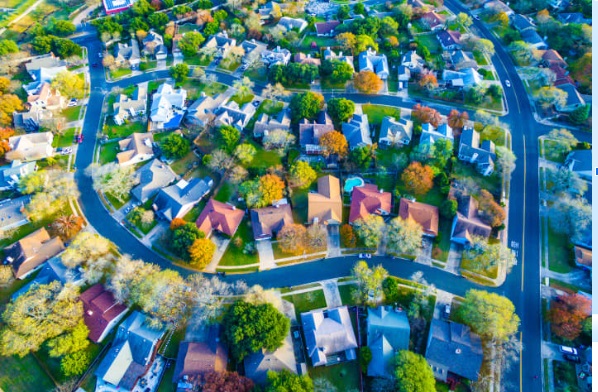As the world evolves, so does the real estate landscape, particularly in the multifamily sector. In 2024, various trends reshape how developers, investors, and residents perceive and engage with multifamily properties. From technological advancements to shifting demographics, here are five emerging trends in multifamily real estate for 2024.
Sustainable Living Spaces
With a growing focus on environmental sustainability, multifamily properties are adapting to incorporate eco-friendly features and practices. Developers are increasingly integrating renewable energy sources such as solar panels, implementing energy-efficient appliances, and incorporating green spaces within communities. Additionally, initiatives like water conservation measures and waste reduction strategies are becoming standard in multifamily developments. Sustainable living spaces appeal to environmentally conscious tenants and contribute to cost savings and long-term value for property owners.


Smart Building Technologies
Advancements in technology are revolutionizing multifamily real estate with the integration of smart building technologies. From smart thermostats and automated lighting systems to keyless entry and remote property management platforms, these technologies enhance convenience, security, and efficiency for residents and property managers. IoT (Internet of Things) devices enable real-time monitoring and control of various building systems, optimizing resource usage and improving overall tenant experience. As the demand for connected living spaces grows, expect widespread adoption of smart building solutions across multifamily properties in 2024 and beyond.
Flexibility in Design and Amenities
The preferences and lifestyles of renters are evolving, driving the need for greater flexibility in multifamily property design and amenities. Developers focus on creating versatile living spaces that accommodate diverse tenant demographics and changing needs. This includes flexible floor plans that easily adapt to different living arrangements, such as co-living or multigenerational housing setups. Additionally, communal amenities like coworking spaces, fitness centers, and pet-friendly facilities are gaining popularity as tenants prioritize convenience and social connectivity. By offering a mix of amenities and flexible living options, multifamily properties can attract a wider range of tenants and foster a sense of community.


Rise of Urban Suburbs:
Urban suburbs are gaining traction as more people seek the benefits of suburban living without sacrificing urban conveniences. These mixed-use developments combine elements of both urban and suburban environments, offering walkable neighborhoods with access to retail, dining, and entertainment options. With the rise of remote work and flexible schedules, urban suburbs provide an attractive alternative for renters looking to balance city living and suburban tranquility. Multifamily developers are capitalizing on this trend by investing in suburban markets with strong job growth and transportation infrastructure, creating vibrant communities that cater to modern urban dwellers.
Emphasis on Health and Wellness
The COVID-19 pandemic has heightened awareness of health and wellness concerns, prompting multifamily properties to prioritize resident safety and well-being. In 2024, expect to see an increased focus on health-centric design features and amenities, such as air purification systems, outdoor recreation areas, and wellness programming. Properties that promote physical and mental well-being will appeal to health-conscious tenants seeking a holistic living experience. Additionally, integrating telehealth services and fitness technology platforms allows residents to prioritize their health from the comfort of their homes. By prioritizing health and wellness initiatives, multifamily properties can differentiate themselves in a competitive market and attract discerning renters.

Conclusion:
The multifamily real estate landscape is evolving rapidly, driven by technological innovations, demographic shifts, and changing consumer preferences. In 2024, sustainability, technology, flexibility, urban suburbs, and health and wellness will emerge as key trends shaping the future of multifamily properties. By embracing these trends, developers and investors can capitalize on opportunities to create innovative, resilient communities that meet the evolving needs of tenants in the years to come.
As the world evolves, so does the real estate landscape, particularly in the multifamily sector. In 2024, various trends reshape how developers, investors, and residents perceive and engage with multifamily properties. From technological advancements to shifting demographics, here are five emerging trends in multifamily real estate for 2024.
Sustainable Living Spaces:

With a growing focus on environmental sustainability, multifamily properties are adapting to incorporate eco-friendly features and practices. Developers are increasingly integrating renewable energy sources such as solar panels, implementing energy-efficient appliances, and incorporating green spaces within communities. Additionally, initiatives like water conservation measures and waste reduction strategies are becoming standard in multifamily developments. Sustainable living spaces appeal to environmentally conscious tenants and contribute to cost savings and long-term value for property owners.
Smart Building Technologies:

Advancements in technology are revolutionizing multifamily real estate with the integration of smart building technologies. From smart thermostats and automated lighting systems to keyless entry and remote property management platforms, these technologies enhance convenience, security, and efficiency for residents and property managers. IoT (Internet of Things) devices enable real-time monitoring and control of various building systems, optimizing resource usage and improving overall tenant experience. As the demand for connected living spaces grows, expect widespread adoption of smart building solutions across multifamily properties in 2024 and beyond.
Flexibility in Design and Amenities:

The preferences and lifestyles of renters are evolving, driving the need for greater flexibility in multifamily property design and amenities. Developers focus on creating versatile living spaces that accommodate diverse tenant demographics and changing needs. This includes flexible floor plans that easily adapt to different living arrangements, such as co-living or multigenerational housing setups. Additionally, communal amenities like coworking spaces, fitness centers, and pet-friendly facilities are gaining popularity as tenants prioritize convenience and social connectivity. By offering a mix of amenities and flexible living options, multifamily properties can attract a wider range of tenants and foster a sense of community.
Rise of Urban Suburbs:

Urban suburbs are gaining traction as more people seek the benefits of suburban living without sacrificing urban conveniences. These mixed-use developments combine elements of both urban and suburban environments, offering walkable neighborhoods with access to retail, dining, and entertainment options. With the rise of remote work and flexible schedules, urban suburbs provide an attractive alternative for renters looking to balance city living and suburban tranquility. Multifamily developers are capitalizing on this trend by investing in suburban markets with strong job growth and transportation infrastructure, creating vibrant communities that cater to modern urban dwellers.
Emphasis on Health and Wellness:

The COVID-19 pandemic has heightened awareness of health and wellness concerns, prompting multifamily properties to prioritize resident safety and well-being. In 2024, expect to see an increased focus on health-centric design features and amenities, such as air purification systems, outdoor recreation areas, and wellness programming. Properties that promote physical and mental well-being will appeal to health-conscious tenants seeking a holistic living experience. Additionally, integrating telehealth services and fitness technology platforms allows residents to prioritize their health from the comfort of their homes. By prioritizing health and wellness initiatives, multifamily properties can differentiate themselves in a competitive market and attract discerning renters.
Conclusion:
The multifamily real estate landscape is evolving rapidly, driven by technological innovations, demographic shifts, and changing consumer preferences. In 2024, sustainability, technology, flexibility, urban suburbs, and health and wellness will emerge as key trends shaping the future of multifamily properties. By embracing these trends, developers and investors can capitalize on opportunities to create innovative, resilient communities that meet the evolving needs of tenants in the years to come.
